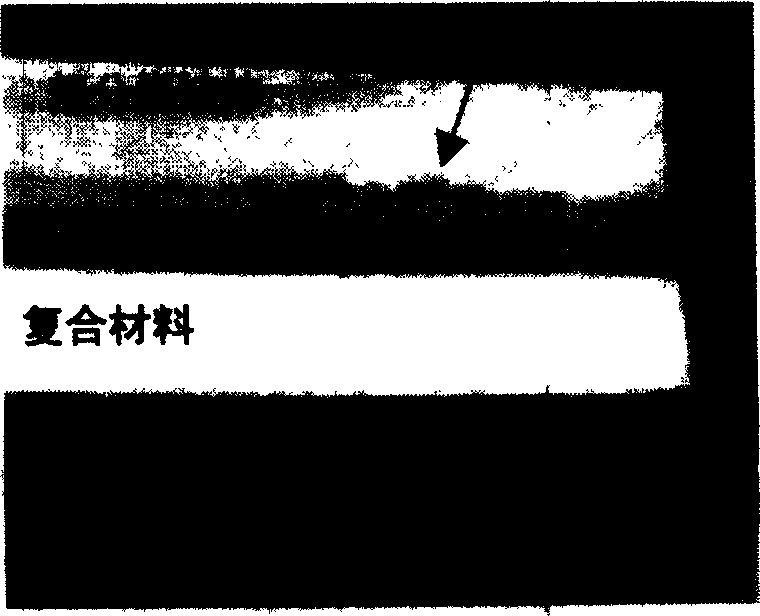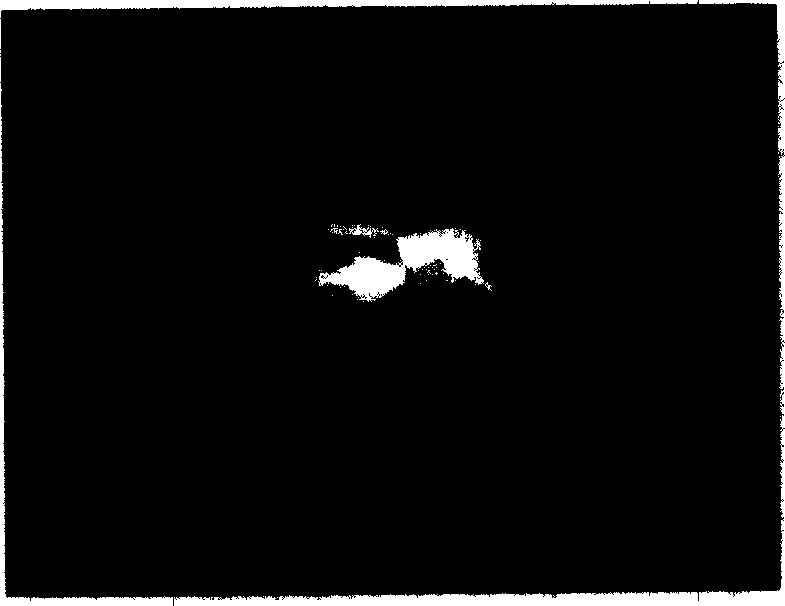Composite material for repairing deletion of tooth and human hard tissues and its preparation
A composite material and hard tissue technology, used in dental preparations, dental prostheses, dentistry, etc., can solve the problems of low strength, high difficulty, and the mechanical strength cannot be very high, and achieve low cost, short time, and easy large-scale continuous. The effect of chemical production
- Summary
- Abstract
- Description
- Claims
- Application Information
AI Technical Summary
Problems solved by technology
Method used
Image
Examples
Embodiment 1
[0040] (1) Preparation of partially sintered zirconia ceramic body
[0041] About 18g of spray-granulated 5.25wt% yttria-stabilized tetragonal zirconia (3Y-TZP) nano-powder is molded first, and then cold isostatic pressed. The particle size of the zirconia nanopowder used is 32nm, polyvinyl alcohol is used as a binder, the isostatic pressure is 280Mpa, and the pressure is maintained for 1min. The zirconia green body was partially sintered to obtain a partially sintered body with a relative density of 71.44% TD.
[0042] The heating system of the partial sintering is as follows: the heating rate between room temperature and 800°C is 2°C / min, the temperature is kept at 800°C for 1 hour, the heating rate between 800°C and 1150°C is 10°C / min, and the temperature is raised to 1150°C. ℃ heat preservation time is 120 minutes, then naturally cool down.
[0043] (2) Surface coupling treatment of partially sintered zirconia ceramic body
[0044] Dilute the coupling agent KH-570 with ...
Embodiment 2
[0057] The composite material was prepared according to the method described in Example 1, wherein the partial sintering temperature was changed to 1125° C. to obtain a relative density of 63.87% TD of the partially sintered body, and the rest were the same as in Example 1.
Embodiment 3
[0059] The composite material was prepared according to the method described in Example 1, wherein the partial sintering temperature was changed to 1200° C. to obtain a relative density of 77.54% TD of the partially sintered body, and the rest were the same as in Example 1.
PUM
| Property | Measurement | Unit |
|---|---|---|
| The average particle size | aaaaa | aaaaa |
| The average particle size | aaaaa | aaaaa |
| The average particle size | aaaaa | aaaaa |
Abstract
Description
Claims
Application Information
 Login to View More
Login to View More - R&D
- Intellectual Property
- Life Sciences
- Materials
- Tech Scout
- Unparalleled Data Quality
- Higher Quality Content
- 60% Fewer Hallucinations
Browse by: Latest US Patents, China's latest patents, Technical Efficacy Thesaurus, Application Domain, Technology Topic, Popular Technical Reports.
© 2025 PatSnap. All rights reserved.Legal|Privacy policy|Modern Slavery Act Transparency Statement|Sitemap|About US| Contact US: help@patsnap.com



